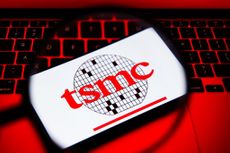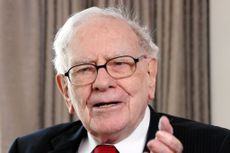My 9 Rules for Picking Mutual Funds
Selecting winning funds means focusing on the right numbers. Expenses and long-term risk-adjusted returns are the most important.

The sad truth is that roughly two-thirds of all actively managed mutual funds fail to beat their benchmark indexes. Most people are better off sticking with low-cost index funds. If you want to invest in actively managed funds, you need to devote time to picking good funds.
What follows are my nine rules for success.
1. Ignore short-term performance.
Returns over a quarter, a year or even two years are meaningless noise, at best. Almost all funds go through hot spells and cold spells. Buying a fund after it has been hot is often a recipe for disaster. Selling a good fund after a couple of bad years is usually folly, too. “You can’t judge an investor from what they’ve done over six months or a year,” says Warren Buffett. He plans to make public returns from Berkshire’s newly hired money manager, Todd Combs, just every five years.

Sign up for Kiplinger’s Free E-Newsletters
Profit and prosper with the best of expert advice on investing, taxes, retirement, personal finance and more - straight to your e-mail.
Profit and prosper with the best of expert advice - straight to your e-mail.
2. Focus on expenses.
Lower-cost funds beat higher-cost funds over extended periods. The average domestic stock fund with an expense ratio in the cheapest 20% among such funds had a 59% chance of outperforming its index over the five years that ended in 2010, Morningstar reports. Indeed, costs were the best predictor of future returns in a recent Morningstar study. Simply picking low-cost funds almost doubles your chances of beating an index.
3. Corporate culture matters.
There’s more than meets the eye to a fund’s expense ratio. It often tells you what kind of company you’re investing with. Are you investing with a greedy financial-services firm, eager to peddle you whatever is in vogue this season? Or are you buying from a company that views you as a long-term client? The second variety tends to charge less.
The way a fund firm treats you, the investor, typically mirrors how it treats its employees. Remember, even halfway competent money managers can find high-paying work elsewhere if the company they’re working for mistreats them.
The best fund firms -- such as Dodge & Cox, T. Rowe Price and Vanguard, all of which sell no-load funds directly to customers, and the broker-sold American funds -- can hire managers from among the cream of the crop because the companies treat their people well. They also charge low fees.
4. Study risk-adjusted returns.
I wrote a piece on the importance of volatility in February (see VALUE ADDED: Consider a Fund’s Volatility -- or Risk Paying a High Price). When assessing a fund’s record, you need to look not only at long-term total returns but also at a fund’s volatility. You can do this by simply eyeballing a fund’s standard deviation and its total return numbers.
Or you can use one of the numerous measures of risk-adjusted returns. There are subtle differences between the Sharpe ratio, alpha, the Morningstar star system, the information ratio and the Sortino ratio. Google them if you want to learn more. But for my money, they’re all good measures of the returns a fund generates relative to the risks that it takes. Almost all are available at Morningstar.com.
These measures make little sense in a vacuum. Use them to compare funds you’re considering. The higher the number, the better the fund has done. I, personally, examine all of them, as well as upside/downside capture ratios, which show how a fund performs in both up markets and down markets.
The Morningstar star system is the target of lots of bad press. Almost all of it is based on ancient history -- before Morningstar began to separate funds by category in assigning star rankings in 2002. Morningstar’s new study found that domestic stock funds that earned five stars as of 2005 had a 55% chance of beating their index over the next five years.
What’s more, combining low expense ratios with five-star rankings worked better than either measure in isolation. Five-star domestic stock funds with expense ratios in the bottom 20% of their category beat their index 66% of the time. Foreign stock funds with both attributes beat their benchmark 53% of the time, taxable bond funds 79%, and municipal bond funds 71%. These findings are fascinating. Simply by investing in low-cost funds with good risk-adjusted returns, you tilt the odds of finding an index-beating fund in your favor.
5. Consider long-term returns under the current manager.
The higher, the better. When a manager at a small shop leaves, the fund’s record becomes virtually meaningless. That’s not the case at firms such as the American funds, Dodge & Cox, and T. Rowe Price, where managers tend to stay for long periods and where grooming eventual successors is part of the job.
Vanguard outsources management for almost all of its actively run funds, so watch out when Vanguard fires a management team. By the same token, when a superior management team leaves a firm, you should considering following it. Jeffrey Gundlach seems to have taken most of TCW’s best bond analysts when TCW fired him and put them to work at his new DoubleLine Total Return (DBLTX), a superb choice for investing in mortgage securities (and a member of the Kiplinger 25).
Morningstar looked at domestic stock funds that had at least one manager who had been in place for a minimum of five years. Such a manager with a record in the top 20% was 43% more likely to beat the index than a fund with a middling record. And that top-tier manager was nearly twice as likely to beat his fund’s index than a fund with a record in the bottom 20%.
6. Watch for asset bloat.
I’m not as concerned about growth in assets at funds as some other fund analysts. But if you’re considering a small-company fund, be aware of a surge in assets under management. It’s a negative. Also, make sure your fund hasn’t made its record in small-capitalization stocks only to morph into a large-cap fund after assets surged.
7. There are exceptions to every rule.
I think Pimco funds charge too much. I wish they’d lower expenses -- especially in an era when bond funds are likely to offer puny returns. But I’m not going to pass up the first-class funds, such as Pimco Unconstrained Bond D (PUBDX) and Pimco Emerging Local Bond D (PLBDX).
8. Sometimes an index fund really is the best choice.
No matter how hard you work at it, you may determine that the best bet is to invest in a Vanguard index fund, particularly in taxable accounts. For instance, I can’t find a single open, no-load emerging-markets stock fund that looks more attractive than Vanguard MSCI Emerging Markets ETF (VWO), an exchange-traded fund.
9. The numbers don’t tell you everything.
Get to know the managers of the funds you like. Read their missives to shareholders and media reports about them. Look for clear-thinking managers who have a passion for investing and a disciplined investing methodology.
Steven T. Goldberg (bio) is an investment adviser in the Washington, D.C. area.

-
 Why Taiwan Semiconductor Stock Is Falling After Earnings
Why Taiwan Semiconductor Stock Is Falling After EarningsTaiwan Semiconductor beat expectations for the first quarter but its stock is notably lower. Here's why.
By Joey Solitro Published
-
 Strategies to Optimize Your Social Security Benefits
Strategies to Optimize Your Social Security BenefitsTo maximize what you can collect, it’s crucial to know when you can file, how delaying filing affects your checks and the income limit if you’re still working.
By Jason “JB” Beckett Published
-
 Warren Buffett Stocks: Analyzing The Berkshire Hathaway Portfolio
Warren Buffett Stocks: Analyzing The Berkshire Hathaway PortfolioThe Berkshire Hathaway portfolio is a diverse set of blue chips and some lesser-known growth bets. Here, we look at all stocks picked by Buffett and his lieutenants.
By Dan Burrows Published
-
 Smart Ways to Invest Your Money This Year
Smart Ways to Invest Your Money This YearFollowing a red-hot run for the equities market, folks are looking for smart ways to invest this year. Stocks, bonds and CDs all have something to offer in 2024.
By Jeff Reeves Published
-
 Vanguard's New International Fund Targets Dividend Growth
Vanguard's New International Fund Targets Dividend GrowthInvestors may be skittish about buying international stocks, but this new Vanguard fund that targets stable dividend growers could ease their minds.
By Nellie S. Huang Published
-
 Where To Invest Your 401(K)
Where To Invest Your 401(K)Knowing where to invest your 401(k) money can be difficult. Here, we rank 10 of the largest retirement funds.
By Nellie S. Huang Published
-
 6 Best Books on Investing
6 Best Books on Investinginvesting Those looking to build their wealth should consider these best books on investing.
By Coryanne Hicks Published
-
 7 Best Stocks to Gift Your Grandchildren
7 Best Stocks to Gift Your GrandchildrenThe best stocks to give your grandchildren have certain qualities in common.
By Dan Burrows Last updated
-
 How to Find the Best 401(k) Investments
How to Find the Best 401(k) InvestmentsMany folks are likely wondering how to find the best 401(k) investments after signing up for their company's retirement plan. Here's where to get started.
By Deborah Yao Published
-
 How to Master Index Investing
How to Master Index InvestingIndex investing allows market participants to use baskets of stocks and bonds to build the best portfolio to meet their goals. Here's how it works.
By Nellie S. Huang Published